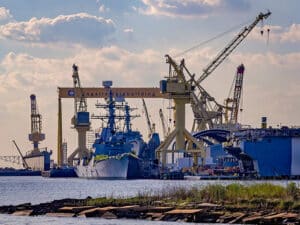
Op-Ed: A digital bet for the future of the maritime sector
Written by
Tanguy Morel, CEO and co-founder of MOMENT
By Tanguy Morel, CEO and co-founder of MOMENT
Responsible for 90% of trade in goods, maritime transport plays an important role in globalization. However, the COVID health crisis shook the sector, questioning the existing practices and use of technologies for daily operations and optimal onboard conditions. A digital approach is now necessary to have truly value-added vessels and to introduce a maritime 4.0 experience.
COVID-19 shook the maritime industry as lockdowns around the world led to restricted traveling and air cargo. The consequences were unprecedented for this competitive market, exposing its vulnerabilities, and this when supply chains were already under pressure. It highlighted the limits of the industry productivity and pinpointed issues such as the length and complexity of sea voyages, or the lack of means on board to facilitate communications.
Characterized by difficult onboard crew conditions, the industry needs to find solutions to the shortage of labor and the numerous crew changes. As crew efficiency is an essential vector to support companies’ development, the onboard conditions must be reviewed to ensure the industry’s sustainability and enhance the crew wellbeing.
A CULTURAL CHANGE TO RESPOND TO COMMUNICATION AND TECHNOLOGICAL WEAKNESSES
Maritime leaders must leverage digital technologies to improve operations onboard, while meeting crew needs. However, they often have in mind that technologies are not always easy to implement onboard, do not necessarily deliver expected performances or simply cannot be installed cost-efficiently.
Some technologies can also convey a negative image associated with a possible loss of control and the reduction of on-board crews—and thus take longer to be adopted. As a result, some vessels or ships are still exposed to technological delays.
The communication capacities are one of these examples. While there is a growing demand for broadband connections and VSAT connectivity, and high-speed satellites to unlock cloud and IoT services, the lack of awareness for advanced maritime satellite services can hold back operators’ growth in many cases. Development of automation has also been delayed by a lack of appropriate standards and regulations.
DIGITALIZING TO INCREASE ONBOARD CAPACITIES
To face the future, the maritime industry must be resilient. With its essential role in keeping economies around the world running, having the best digital services, ensures optimal decision-making.
Securing health and wellness for crew members not only improves productivity, but also increases loyalty to the company. By proposing modular services including entertainment, infotainment, and communication functionalities, the wireless digital platforms optimize onboard crew experience.
Designed for an offline environment, digital platforms are easily integrable on third party equipment and represent a cost-effective solution. Embedded on an embarked server, digital platforms coupled with IoT technology are an interesting opportunity for the maritime industry to enable advanced services, higher level of comfort, as well as operational improvements and savings.
Powerful services and automation tools can also be developed to extend crew capacities by, for instance, customizing functionalities.
The creation of an efficient digital ecosystem onboard is an essential growth factor for the maritime sector which remains the engine of the economy. Beyond automation, communication, advanced services and monitoring of operations, digitalization will be a key factor to achieve objectives, increase productivity and also respond to new global challenges such as autonomous navigation or energy efficiency with the optimization of consumption of fuel in the near future.




